![]()
![]()
![]()
Use LEFT and RIGHT arrow keys to navigate between flashcards;
Use UP and DOWN arrow keys to flip the card;
H to show hint;
A reads text to speech;
31 Cards in this Set
- Front
- Back
|
RNA
|
RNA is a short ribonucleic acid which is a type of molecule that consists of a long chain (polymer) or nucleotide units.
|
|
|
organelle
|
This is a general term that refers to an organ or smaller structure within a cell. Membrane bound organelles are found in eukaryotic cells.
|
|
|
lipids
|
Lipids take many forms and have varying functions such as storing energy and acting as a building block of cell membranes.
|
|
|
polymer
|
This is a compound of large molecules formed by repeating monomers.
|
|
|
plasmodesmata
|
These are channels between the cell walls of plant cells that allow for transport between cells.
|
|
|
plastid
|
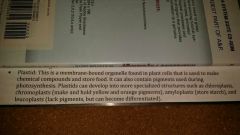
|
|
|
chloroplast
|
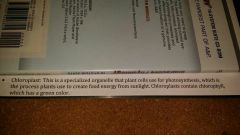
|
|
|
cell wall
|
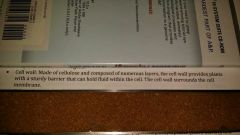
|
|
|
flagella
|
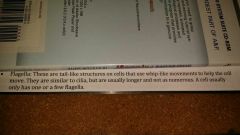
|
|
|
cilia/ cilium
|
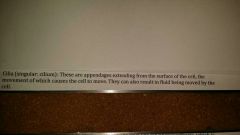
|
|
|
lysosome
|
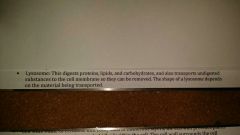
|
|
|
centriole
|
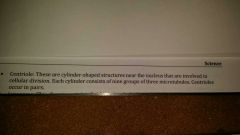
|
|
|
centrosome
|
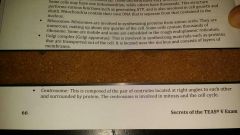
|
|
|
microtubules
|
These are a part of the cytoskeleton and help support. the cell. They are made of protein.
|
|
|
cytoskeleton
|
this consist of microtubules that help shape and support the cell
|
|
|
vesicle
|
This is a small organelle within a cell. It has a membrane that performs varying functions including moving material within a cell.
|
|
|
vacuole
|
These are sacks used for storage digestion and waste removal. There is one large vacuole in plant cells. Animal cells have small sometimes numerous vacuoles.
|
|
|
golgi complex/ golgi apparatus
|
This is involved in synthesizing materials such as proteins that are transported out of the cell.It is located near the nucleus and consists of layers of membranes.
|
|
|
Ribosomes
|
Ribosomes are involved in synthesizing proteins from amino acids. They are numerous making up and about one quarter of a cell. Some cells contain thousands of ribosomes. Some are mobile some and embedded in the rough endoplasmic reticulum.
|
|
|
mitochondrian
|

|
|
|
Endoplasmic reticulum
|

|
|
|
cell membrane/plasma membrane
|
This defines the cell by acting as a barrier it helps keep cytoplasm in and substances located outside the cell out. It also determines what is allowed to enter and exit the cell.
|
|
|
cytoplasm
|
This is a general term that refers to cytoplasm and the sub structures (organelles) found within the plasma membrane, but not within the nucleus.
|
|
|
cytosol
|
This is the liquid material in the cell. It is mostly water but also contains some protein molecules.
|
|
|
nucleoplasm
|
This is the liquid within the nucleus and is similar to cytoplasm.
|
|
|
Nuclear pores
|
These are involved in the exchange of material between the nucleus and the cytoplasm
|
|
|
Nuclear envelope
|
This includes the structures of the nucleus. It consists of inner and outer membranes made of lipids.
|
|
|
nucleolus
|
This structure contained within the nucleus consists of protein . It is a small round does not have a membrane, is involved in protein synthesis and synthesizes and stores RNA
|
|
|
chromatin
|
This consists of the DNA and protein that make up chromosomes
|
|
|
chromosomes
|
These are highly condensed threadlike rods of DNA short for deoxyribose nucleic acid, DNA is genetic material that stores information about the plant or animal.
|
|
|
nucleus/nuclei
|
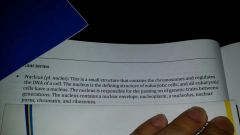
|

